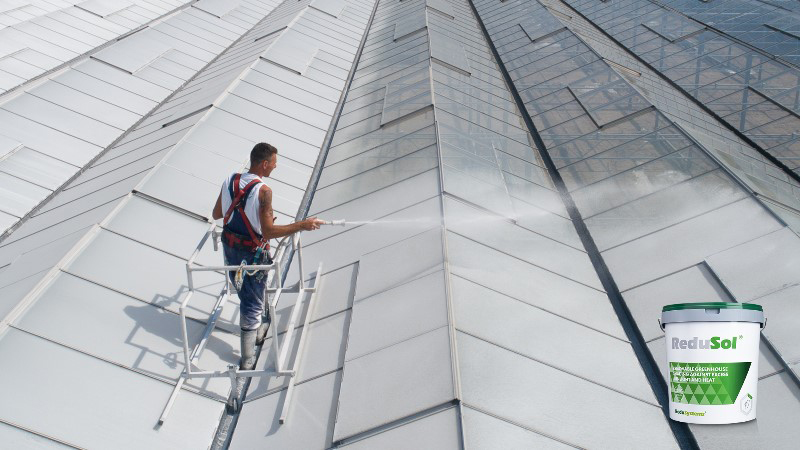Maintaining Energy-Efficient Greenhouse Heating During Cold Months
Greenhouses allow growers to produce crops year-round. To ensure growing conditions are consistent throughout the year, greenhouses need a heat source in colder months. Heating options can become costly, so energy-efficient greenhouse heating is important.
From fruits and vegetables to houseplants and flowers, greenhouses can provide the perfect growing environment for a variety of plants. Growing conditions must be steady for consistent plant growth. Reliable and efficient heating is necessary. If heaters fail to work properly, it can result in the loss of plant production and be detrimental to a grower’s bottom line.
Energy-efficient heating in greenhouses is possible with proper inspection of each greenhouse heater. Consider upgrades in equipment or complete replacement of unit heaters to reach optimal energy-efficient heating.
Unit heaters can be a greenhouse’s best friend in colder months. Warm air is pushed into greenhouses and circulated throughout the growing area, keeping plants warm without increasing humidity levels substantially. Multiple units can be used, especially in large commercial greenhouses.
Types of Unit Heaters
There are two main types of gas-fired unit heaters. Power exhaust units draw the combustion air for ignition and run the burners through an opening in the heater. They draw in air within a space and exhaust flue gases through one pipe to the outside. These units cost less to purchase, but they may not be as energy-efficient as another heater option.
Separated combustion units pull air from outdoors or a separate room for combustion air. Only clean air is used in combustion, making these units better able to operate in working environments with harsh conditions – such as negative pressure, high moisture, and humidity or chemicals – that can shorten the lifespan of a unit. Separated units require more piping and cost more upfront, but these units will cost less over their lifespan because of their efficient operation.
Greenhouses will benefit the most from high-efficiency separated combustion units. These units are ideal for offering both sustainability and financial savings. Products like the Effinity high-efficiency commercial gas-fired unit heater provide optimal heating for greenhouse plants. The Effinity promotes a clean air growing environment by venting combustion fumes outside and away from the plants. These units can also be equipped with Building Management Systems integration capabilities, allowing them to be added to existing BMS easily.
Heater Placement
It is important to evaluate the best location for unit heaters in greenhouses. It is tempting to lift the units and orient them as much out of the way as possible. While this helps growers have full maneuverability inside greenhouses, heater placement must still be appropriate for maintenance and overall performance.
To make sure units are performing at maximum efficiency, they must be placed opposite of each other to circulate air. The units must also be accessible for annual inspection, scheduled maintenance, and needed repairs. Make sure the controls, motor, and fan blade are all easily reachable with plenty of space around the unit. Walls, beams, shelves, and other obstacles may block accessibility.
Regular Maintenance
Stick to a regular maintenance plan to extend the life of unit heaters and keep them efficient. Adhere to a winter maintenance checklist to ensure greenhouses are being used optimally. Look for gaps in windows or doors that allow cold air to seep inside. Make sure heaters are performing correctly and efficiently by visually inspecting units and listening for abnormal sounds that may indicate attention is needed. Examine plants to determine if they are adequately heated and humidity conditions are optimal for growing.
Maintaining energy-efficient heating in greenhouses also extends beyond winter checklists. Unit heaters should be checked throughout the year for wear and tear, obstructions, and structural defects. They also need to be cleaned and tuned-up. Any openings in greenhouse walls, windows. or doors should be addressed well in advance of cold weather, if possible.
Visually inspect wiring, thermostats, and fans. Check venting systems, burner tubes, main burner, and heat exchanger for blockages. A licensed technician can check gas pressure, pipes, fuel supply, and burner mechanisms. All gas connections should fit tightly. Test for gas leaks using a water/soap solution. Never use an open flame to check for a gas leak.
Condensate leakage is possible, especially with high-efficiency units. Keep an eye out for water stains on the exterior of the vent pipe or rusting. This could be a sign of improper unit operation or vent configuration problems. High-efficiency units will create more condensate, so make sure the drainage lines are not clogged or damaged to ensure units are working at peak performance.
Greenhouse owners can maintain energy-efficient heating in their greenhouses with proper equipment and maintenance. Performing maintenance checks ensures unit heaters run smoothly, preventing high heating bills or a loss of crops.









